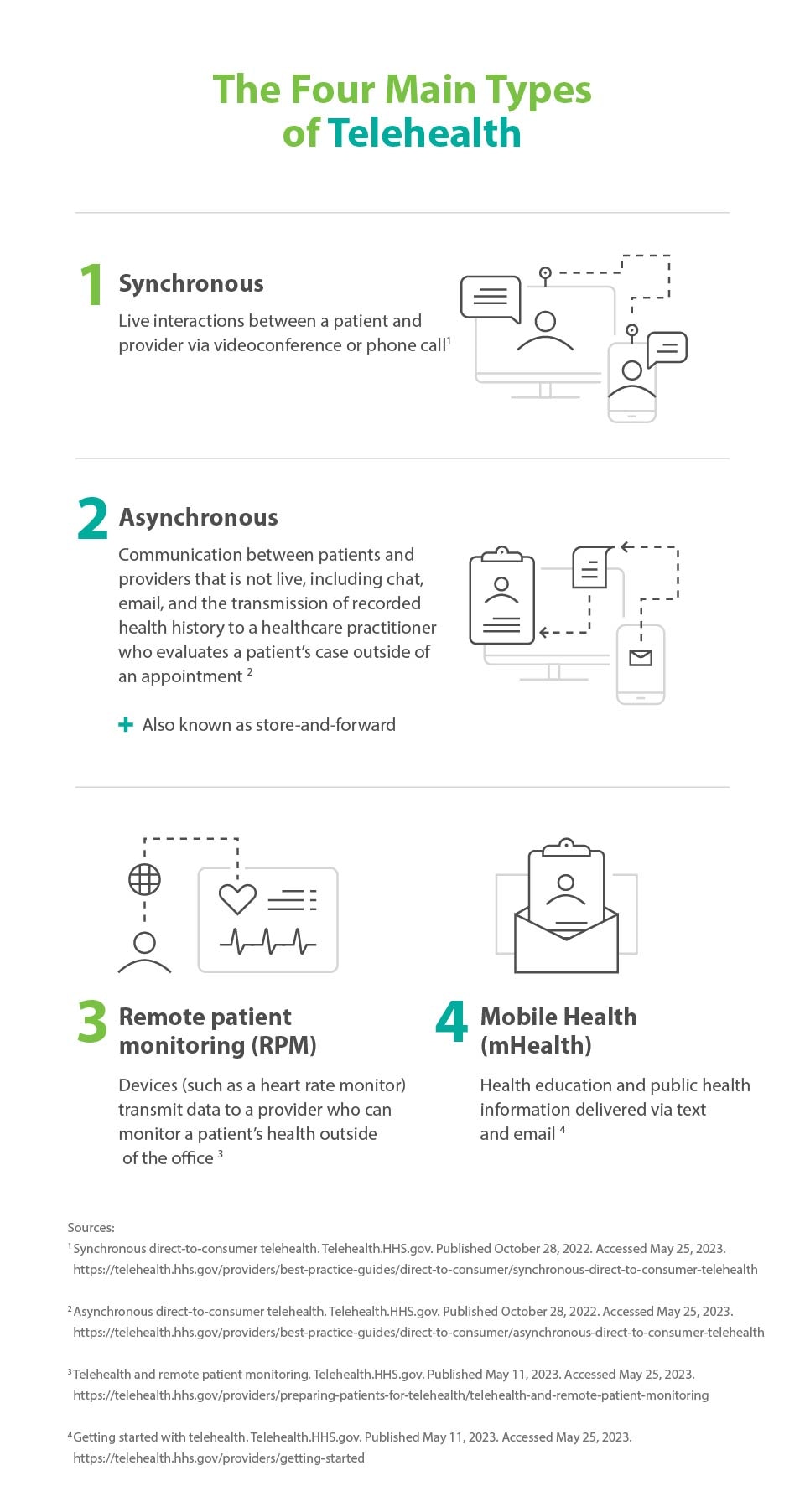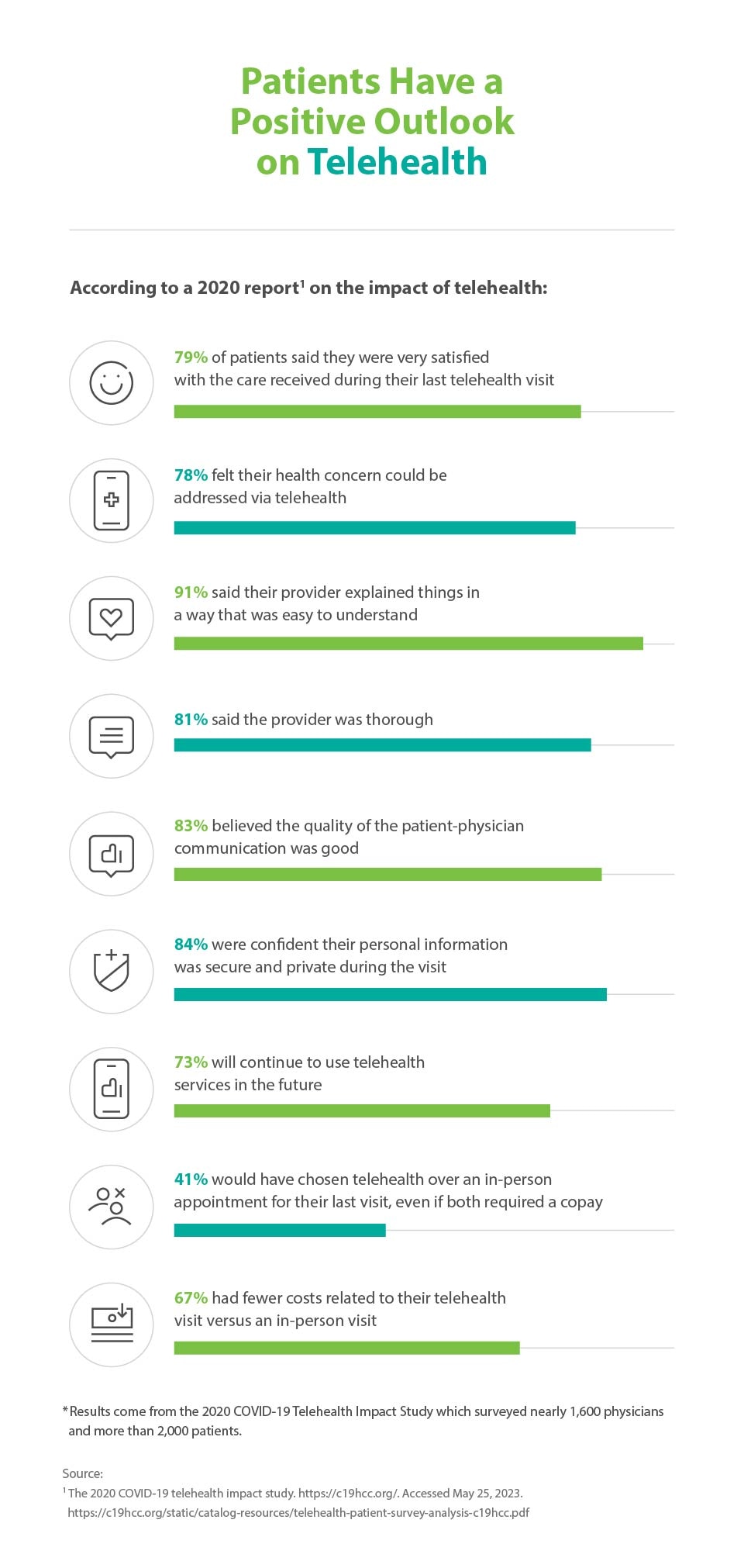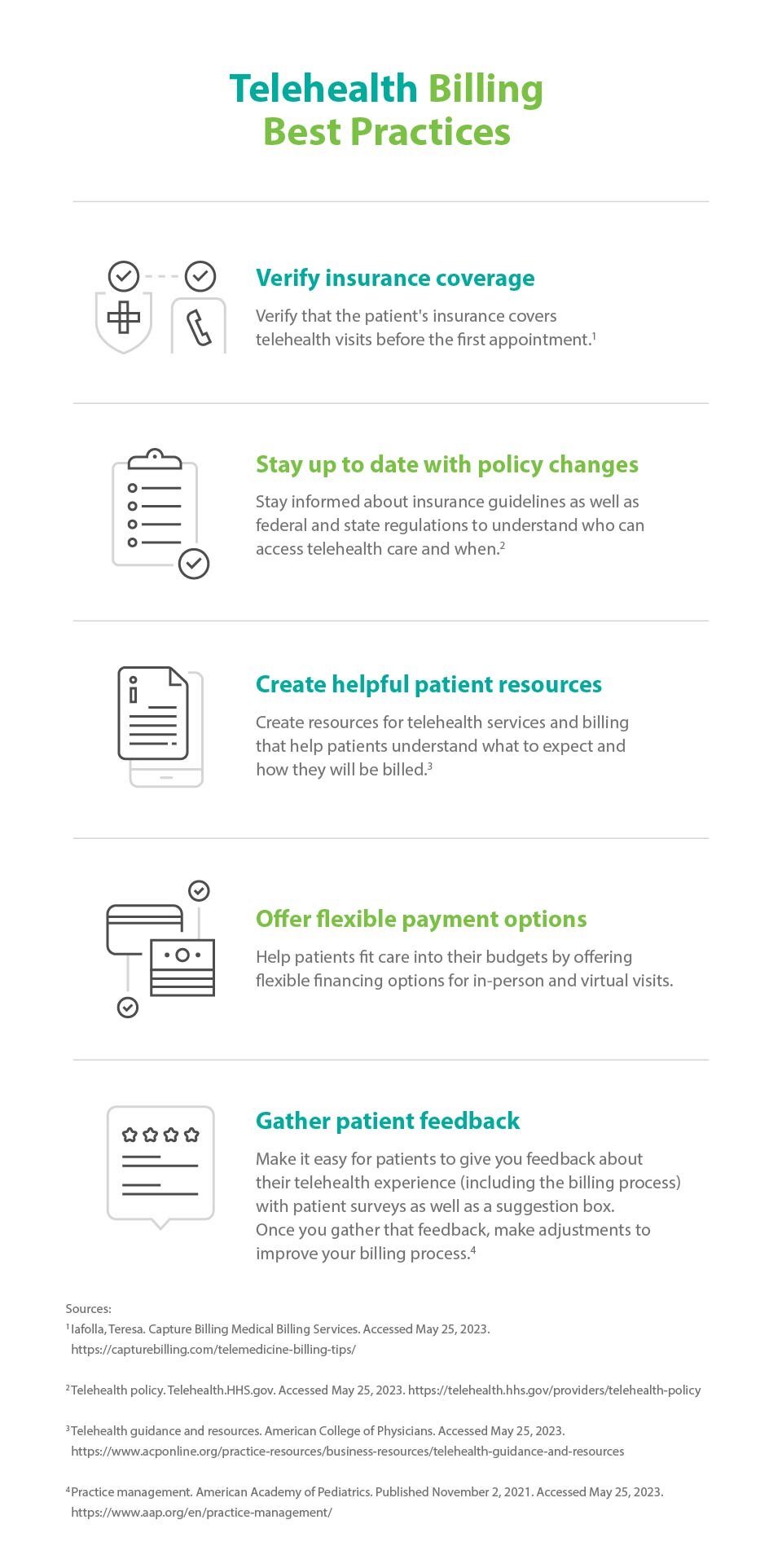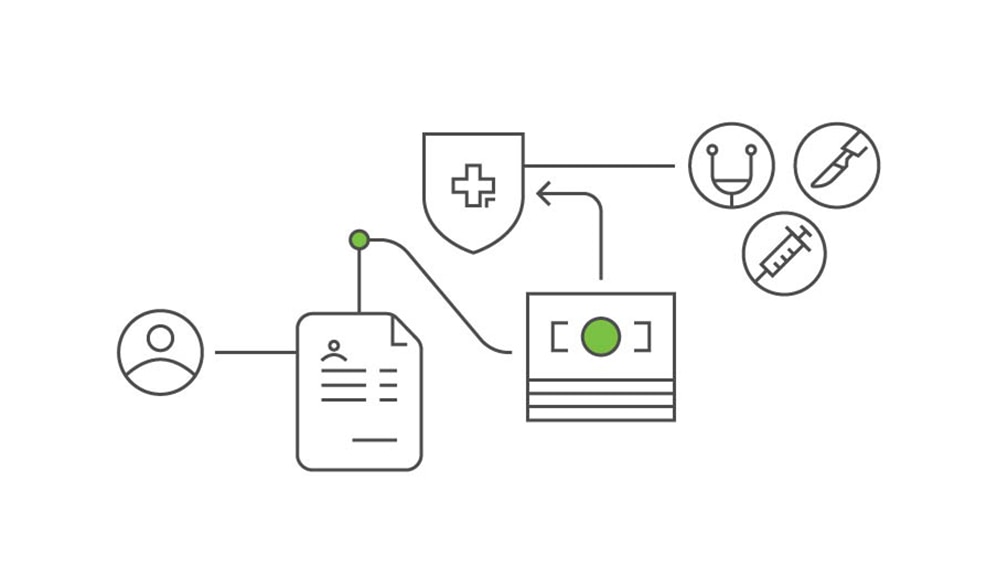Billing for Telehealth: Best Practices and Key Questions to Ask Payers
Telehealth care is on the rise. How does billing for telehealth compare to in-office visits?
By Lee Huffman
Posted Sep 13, 2024 - 5 min read

Compared to traditional office visits, telehealth appointments may offer many notable conveniences for patients and providers. But while shifting provider visits online may have its benefits—including increased patient satisfaction — there are still some hurdles to jump. Health systems and providers have been tasked with adjusting their care delivery strategies to accommodate the shift to telemedicine. One of the biggest challenges they face? They must determine how to handle the medical billing and collection process in a way that makes patients feel confident and supported during the patient financial experience. In fact, the 2020 J.D. Power 2020 U.S. Telehealth Satisfaction study found that 52 percent of telehealth users have encountered at least one barrier that made it difficult to use telehealth, including “lack of awareness of cost.”
This article will explore what telehealth is (beyond just virtual calls with providers) plus telehealth billing best practices and important questions to ask payers to improve the financial management of your health system or practice.

What Is Telehealth?
Telehealth, also known as telemedicine, is the use of digital information and communication technologies to offer and access healthcare services remotely. These technologies may allow patients to book and join virtual appointments from anywhere, meaning they can spend more time with family and less time driving back and forth to a provider’s office or waiting to see a provider.
Providers can also create better outcomes for patients through remote patient monitoring (RPM). Many patients with chronic diseases may be able to better manage their conditions when they don’t miss appointments. This benefit can be especially important for older patients or patients with limited mobility who rely on others to get them to and from health and medical visits. With RPM, the provider can view monitoring device data (like blood sugar levels) as well as compliance with prescription drugs. While not all exams can happen from afar, many do not require an in-person visit.
Telehealth also allows for direct communication between a patient and provider via messaging portals. Rather than leaving a message with a front-desk administrator or answering service, patients can receive feedback and detailed instructions straight from the source.
Additional Benefits of Telehealth
With the adoption of telehealth, providers can improve the level of care they offer patients. For starters, virtual appointments may make healthcare more accessible for individuals who live in isolated areas, have limited mobility, and who put off medical or health visits because they can’t seem to find the time to go. Additionally, those who have limited transportation options or who rely on others to drive them can get high-quality care without visiting a provider’s office. Telehealth can also make it easier for patients to access specialists located outside of driving distance and for multiple providers to coordinate when caring for the same patient.
With the adoption of telehealth, providers can improve the level of care they offer patients. For starters, virtual appointments may make healthcare more accessible for individuals who live in isolated areas, have limited mobility, and who put off medical or health visits because they can’t seem to find the time to go. Additionally, those who have limited transportation options or who rely on others to drive them can get high-quality care without visiting a provider’s office. Telehealth can also make it easier for patients to access specialists located outside of driving distance and for multiple providers to coordinate when caring for the same patient.

Billing Best Practices
If you offer telehealth to patients, consider these medical billing best practices.
- Verify insurance coverage
Insurance guidelines dictate what is and isn't allowed by providers and patients during telehealth visits, and not all policies cover billing for telehealth visits. You may want to verify that the patient's insurance covers telehealth visits before the first appointment. - Stay up to date with policy changes
Federal and state regulations and restrictions influence who can access telehealth care and when. And as evidenced by the U.S. government making telehealth more accessible during the COVID-19 pandemic, telehealth policies change. While telehealth isn’t brand new, it is an emerging field of medicine and guidelines may change in the coming years as health providers and insurance companies determine how it fits into a post-pandemic world. Knowing the rules will help ensure a smooth patient financial experience. - Develop helpful patient resources
Consider creating resources for telehealth services that help patients understand what to expect and how billing works. For instance, you could provide patients with a short guide or video that details how to log on to telehealth calls and offers tech support. - Offer flexible payment options
By offering flexible financing options for in-person and virtual visits, patients may find it easier to fit care into their budgets, and you can improve patient payment collection. - Gather patient feedback
Consider making it easy for patients to provide feedback about their telehealth experience (both in terms of their care and the medical billing process) with patient surveys as well as a suggestion box. Once you gather feedback, consider using it to make adjustments to improve your billing process.

Important Questions to Ask Payers
If you offer telehealth, you may want to keep these two key questions top of mind.
- Which healthcare services and providers qualify for telehealth coverage?
It’s helpful for patients and providers to understand that insurance companies may place limits on payments for virtual visits—or they may not pay for them at all. These coverage policies could impact how much a patient is responsible for paying. As mentioned earlier, while many provider-patient interactions can be accomplished virtually, others require in-person exams. Understanding these differences can eliminate wasted time and set appropriate expectations for both the provider and patient. Even though telehealth is a viable solution for patients who live in remote parts of the country as well as those who struggle to make time for visits, insurance companies may require patients to meet certain conditions (including having an established relationship with a provider or health system) before they’re eligible for telehealth coverage. At the very least, some insurance companies may require patients to sign an informed consent document that addresses the virtual nature of these appointments. - What type of telehealth technologies are covered?
Video telehealth appointments can allow a provider to see the patient and, in some cases, diagnose a problem and prescribe treatment without ever seeing the patient in person. These video sessions can also enable the provider to escalate patient care if they recognize a more serious problem than what the patient communicates verbally. On the flip side, certain telehealth services may be offered via audio-only appointments. Some insurance companies may limit patients to a maximum number of telehealth visits per year, no matter if they are audio or video. Knowing this cap may help the patient and provider develop a plan that addresses the patient's needs, while also ensuring the patient can afford care. Whether or not telehealth is covered, health providers can provide flexible financing options so patients can pay for care over time.
The Bottom Line
Telehealth appointments may offer both time and cost savings for health systems, providers, patients, and insurance companies. They can improve provider-patient relationships and eliminate some of the major hurdles that get in the way of patients seeking the care they need and want.
For a smooth virtual healthcare process from start to finish, consider regularly assessing your patient billing and collections procedures. Patience, flexibility, and clear communication can help ensure you properly take care of your patients while you improve your financial performance.
About the Author

Lee Huffman
Lee Huffman is a former financial planner and corporate finance manager who now writes about early retirement, credit cards, travel, insurance, and other personal finance topics. He enjoys showing people how to travel more, spend less, and live better.
Healthcare payment and financing solution
The CareCredit health and wellness credit card helps improve the payment experience for patients and clients, and your financial performance.
Get StartedThis content is subject to change without notice and offered for informational use only. You are urged to consult with your individual business, financial, legal, tax and/or other advisors and/or medical providers with respect to any information presented. Synchrony and any of its affiliates, including CareCredit, (collectively, “Synchrony”) makes no representations or warranties regarding this content and accept no liability for any loss or harm arising from the use of the information provided. Your receipt of this material constitutes your acceptance of these terms and conditions.




